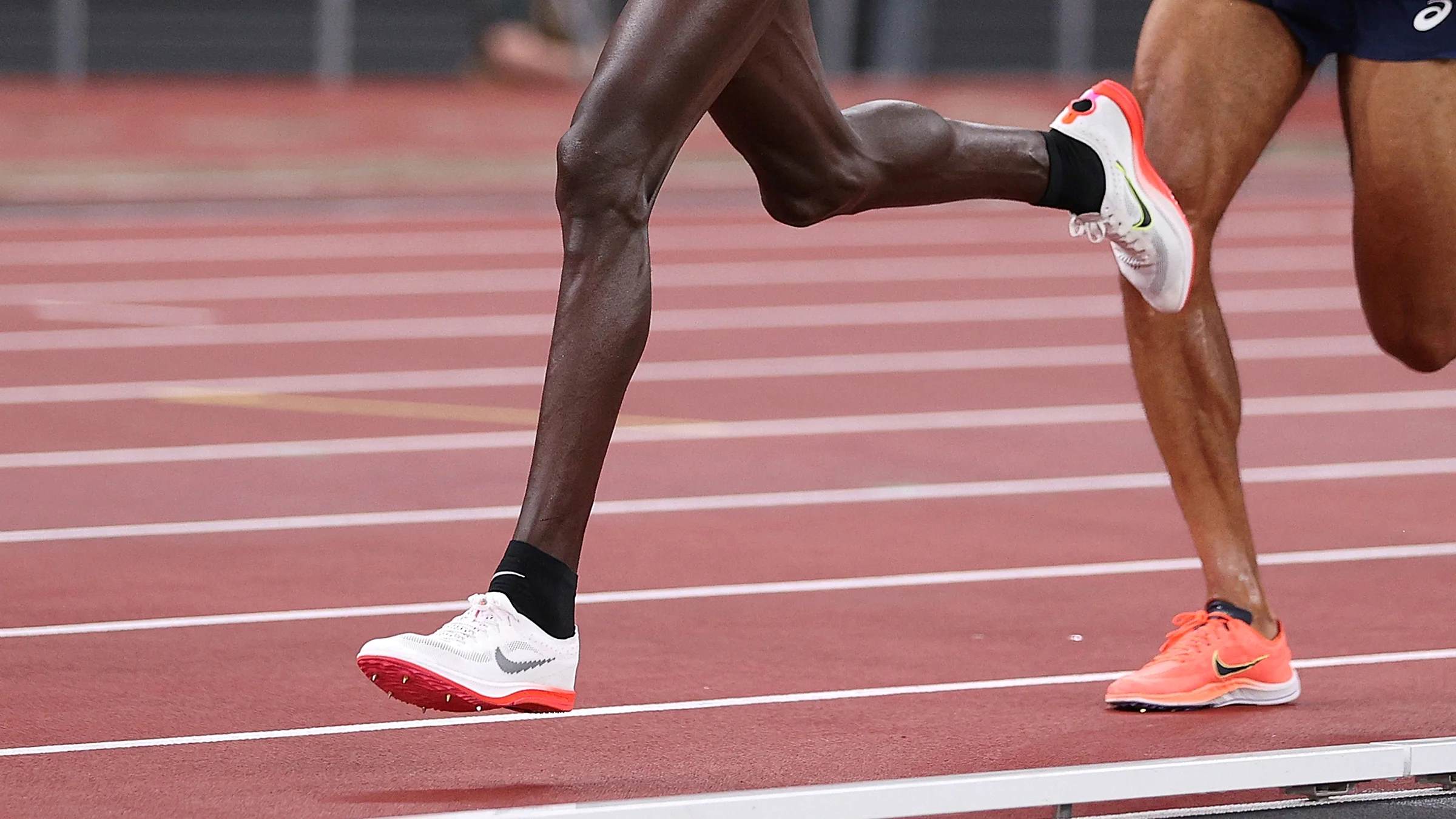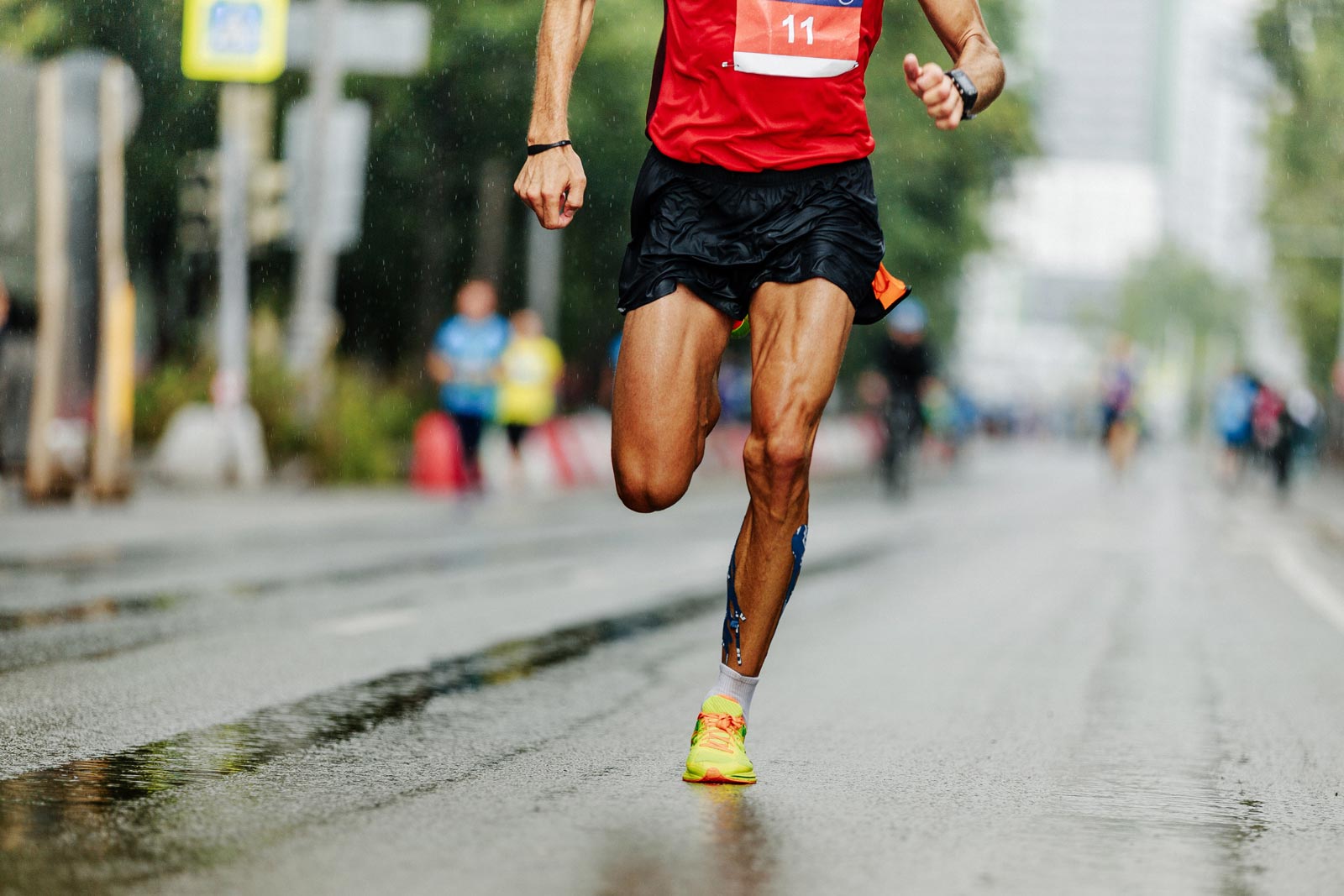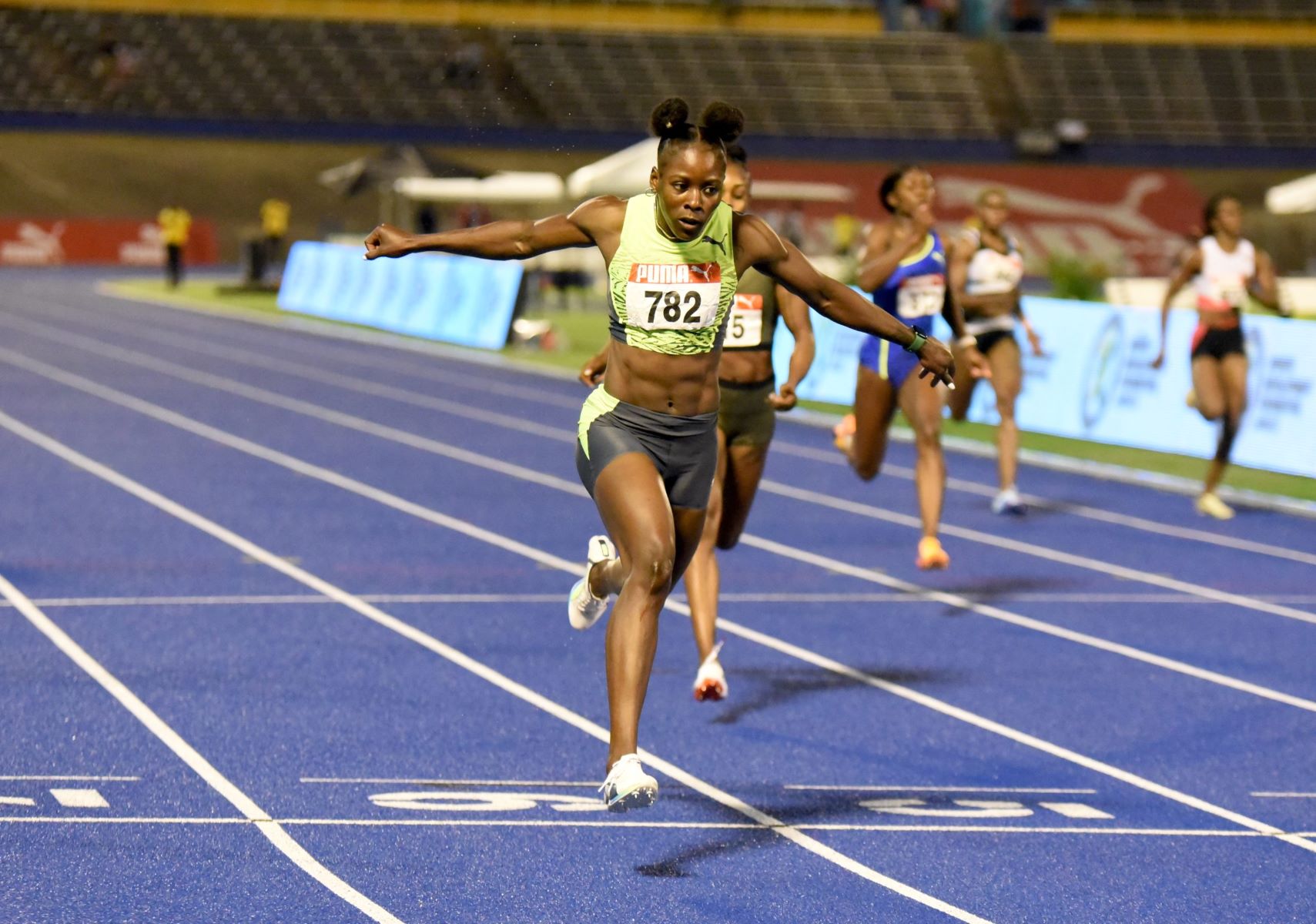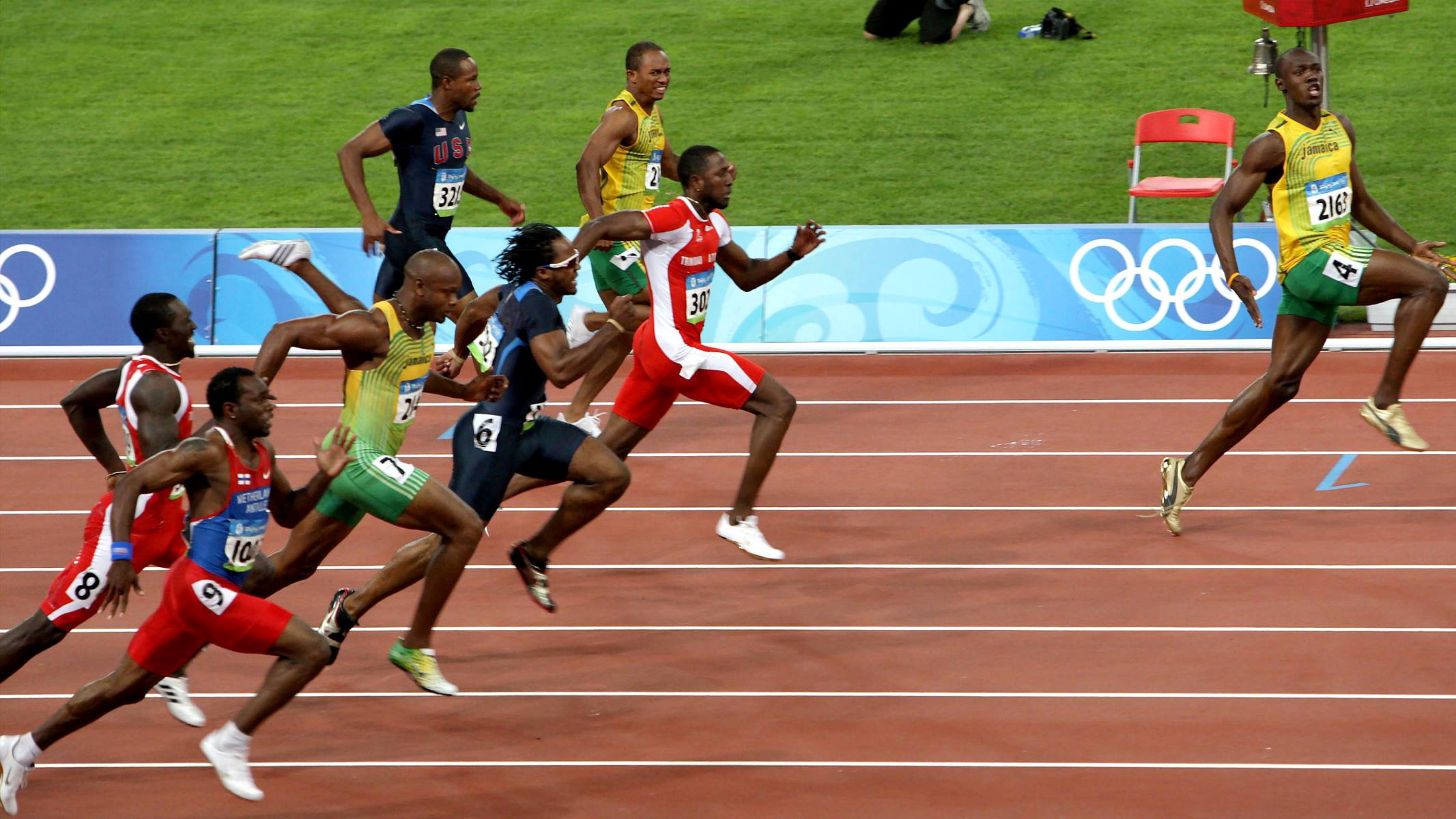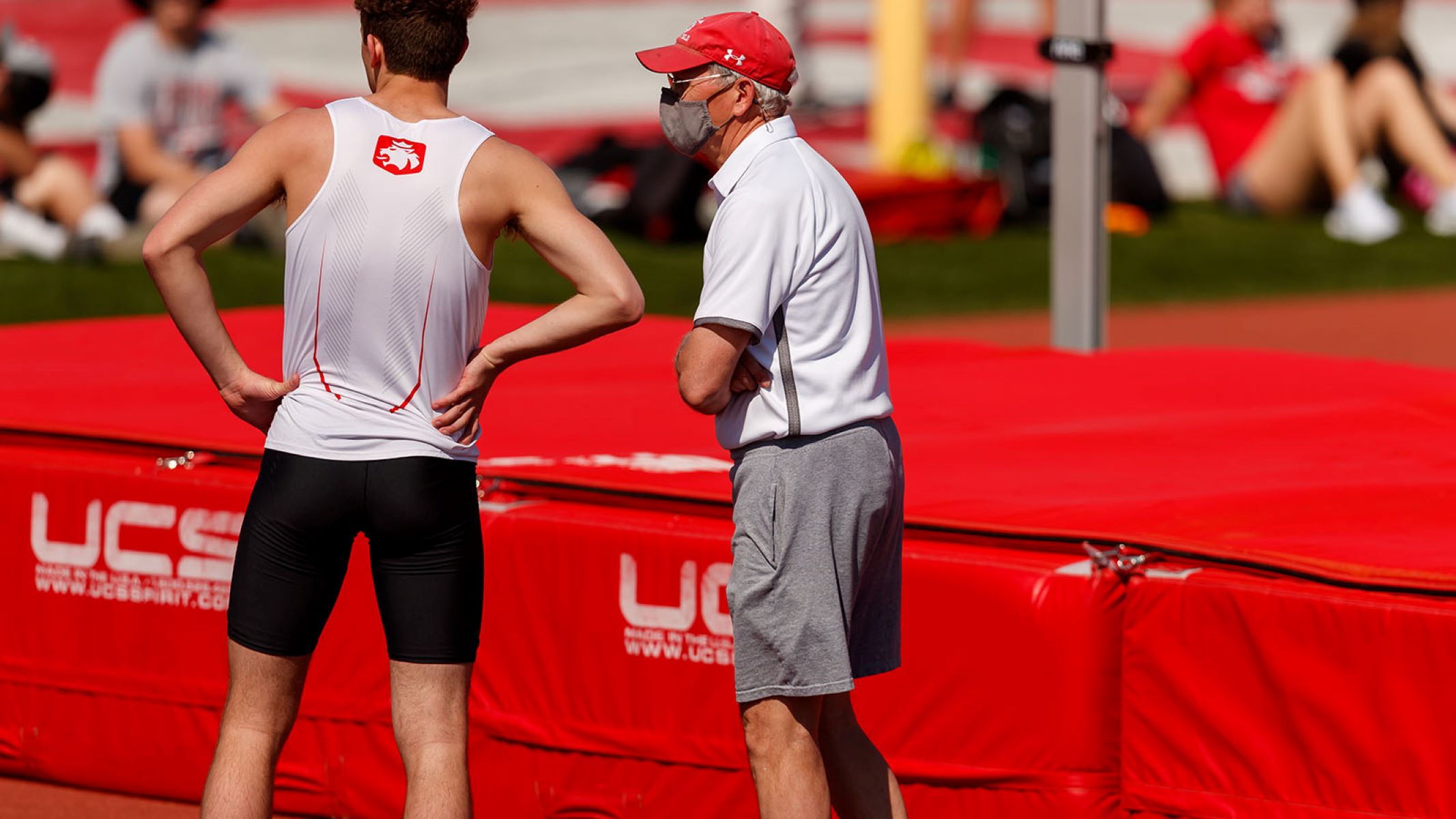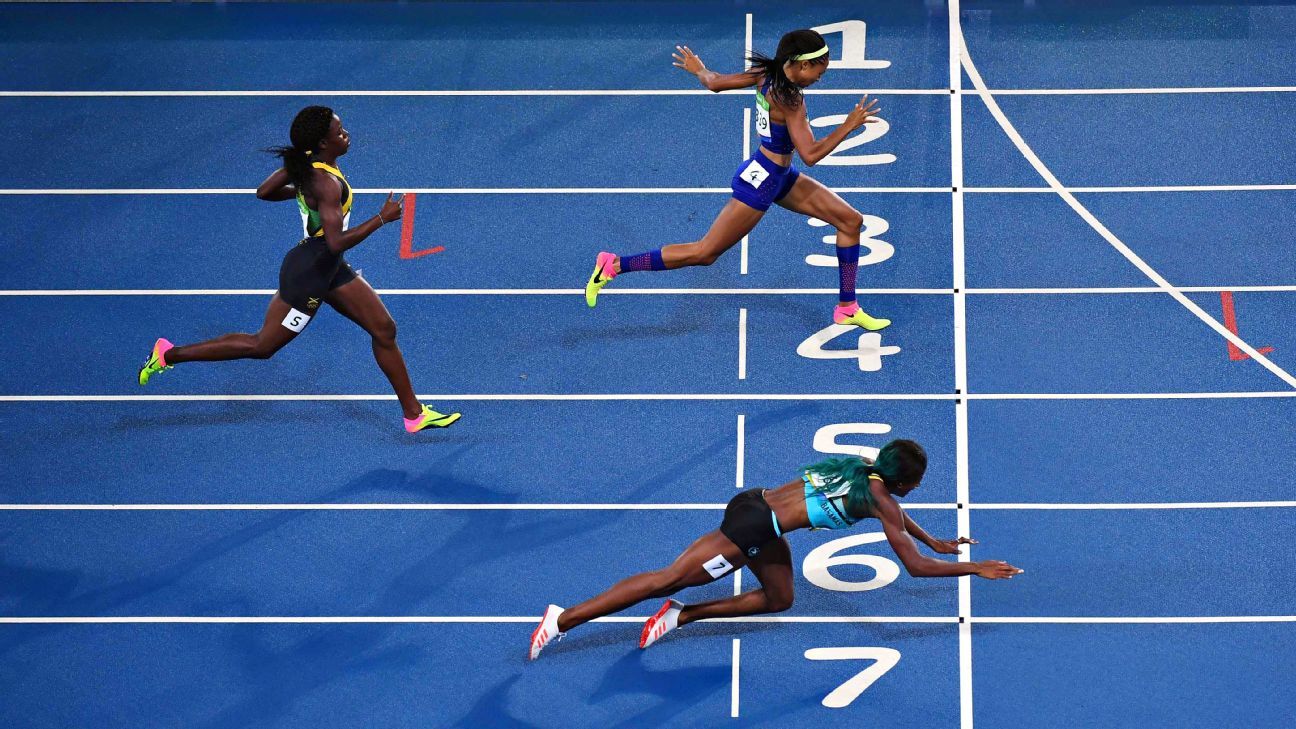

Featured
How To Pace 400M
Modified: August 18, 2023
Learn the best strategy to pace yourself for a 400-meter race. Follow our featured guide to improve your timing and endurance on the track.
Introduction
Welcome to the exciting world of the 400m race, one of the most demanding and thrilling events in track and field. Whether you’re a seasoned athlete looking to improve your performance or a beginner seeking guidance on how to approach this challenging distance, you’ve come to the right place. In this article, we will explore the art of pacing the 400m and provide you with invaluable tips and strategies to optimize your race strategy.
The 400m race, also known as the quarter-mile, is a unique blend of speed, endurance, and mental fortitude. It requires a delicate balance between maintaining a strong initial burst of speed and conserving enough energy to finish strong. Many athletes underestimate the importance of pacing in this event, often resulting in diminished performance and a lackluster finish.
By understanding the intricacies of pacing the 400m, you can unlock your full potential and achieve remarkable results on the track. Pacing is the key that allows you to establish a rhythm, maintain momentum, and ultimately sprint towards the finish line with every ounce of energy you have left.
In this article, we will delve into the various aspects of pacing the 400m, including the importance of a proper warm-up and pre-race preparation, strategies for pacing each section of the race, and essential recovery techniques post-race. With an in-depth understanding of pacing and the advice presented in this article, you’ll be well-equipped to tackle the 400m race and reach your goals.
So, ready your spikes, channel your inner strength, and let’s dive into the exhilarating world of pacing the 400m. By the end of this article, you will have the knowledge and tools necessary to take your performance to new heights and conquer the quarter-mile with finesse.
Understanding the 400m Race
Before we dive into the intricacies of pacing the 400m, it is crucial to have a solid understanding of the race itself. The 400m race is a sprint event that consists of one lap around the track, covering a total distance of 400 meters or approximately 437 yards. It is often referred to as a combination of speed and endurance, demanding a unique skill set from athletes.
Unlike shorter sprints such as the 100m or 200m, the 400m requires a careful balance between starting explosively and maintaining a steady pace throughout the race. It is considered a middle-distance race, requiring both anaerobic and aerobic energy systems to perform at a high level.
The race begins with a staggered start, with athletes positioned in separate lanes to ensure fairness. Once the starting gun fires, runners sprint out of the blocks, aiming to reach their maximum speed within the first 100 meters. This initial burst of speed is crucial for establishing a solid foundation for the rest of the race.
As the race progresses, athletes must find their rhythm and settle into a controlled yet aggressive pace. The middle 200 meters of the race are often referred to as the “make or break” section, as sustaining momentum and managing fatigue are key challenges. It is during this portion that pacing becomes absolutely essential.
In the final 100 meters, athletes must push through the build-up of lactic acid in their muscles and unleash a final burst of speed. This requires mental strength, focus, and an unwavering determination to finish strong.
Understanding the nuances of the 400m race is essential for developing an effective pacing strategy. It requires not only physical strength and speed but also mental fortitude and tactical awareness. By understanding the demands of the race, athletes can tailor their training and race strategies to maximize their performance.
As we delve deeper into this article, we will explore the importance of pacing in the 400m and provide you with invaluable tips and strategies to help you conquer this challenging distance. Remember, pacing is the key to success, and by mastering it, you can unleash your full potential on the track.
Importance of Pacing
When it comes to the 400m race, pacing is absolutely crucial. It can make or break your performance and significantly impact your overall race time. Pacing involves finding the right balance between starting strong, maintaining a steady rhythm, and finishing with a strong kick. Here are some key reasons why pacing is of utmost importance in the 400m race:
1. Energy Conservation: By pacing yourself properly, you can conserve energy throughout the race. Starting too fast and sprinting at your maximum speed from the beginning can lead to early fatigue, making it difficult to maintain your form and speed in the later stages of the race. Pacing allows you to distribute your energy more efficiently, ensuring that you have enough in reserve for the final push.
2. Muscle Fatigue Management: The 400m race pushes your muscles to their limits. Pacing helps manage muscle fatigue by preventing excessive buildup of lactic acid, which can impede your ability to maintain speed and power. By finding the right balance between speed and endurance, you can delay the onset of muscle fatigue and optimize your overall performance.
3. Mental Focus and Strategy: Pacing requires mental focus and strategic thinking. Rather than solely relying on raw speed and power, pacing allows you to take a more calculated approach to the race. By establishing a rhythm and sticking to a predetermined race plan, you can maintain your composure, make better decisions, and adapt to any challenges that arise during the race.
4. Consistent Performance: Pacing helps you maintain a consistent performance throughout the 400m race. By avoiding drastic fluctuations in your speed, you can achieve a smoother run and avoid burnout. Consistency is key to optimizing your race time and achieving your personal best.
5. Effective Use of Energy Systems: The 400m race requires both anaerobic and aerobic energy systems to perform at a high level. Pacing allows you to utilize these energy systems effectively. Starting too fast can primarily engage the anaerobic system, depleting its resources early on. By pacing yourself, you can optimize the contribution of both energy systems, allowing you to maintain a faster pace for a longer duration.
By understanding the importance of pacing in the 400m race, you can develop a more strategic and effective race plan. Pacing enables you to sustain your speed, manage fatigue, and finish the race strong. It is the key to unlocking your full potential and achieving exceptional results on the track.
Strategies for Pacing the 400m
When it comes to pacing the 400m race, finding the right strategy is essential for success. Here are some valuable strategies that can help you maintain an optimal pace throughout the race:
1. Establish a Race Plan: Before stepping onto the track, develop a race plan that outlines your target splits for each 100m segment of the race. This plan can help you stay focused and accountable during the race, providing a roadmap for your pacing strategy.
2. Start Strong, but Controlled: The first 100m of the 400m race is crucial for establishing a solid foundation. Start with a powerful burst of speed, but avoid going all-out. Aim to reach around 95% of your maximum speed, ensuring that you have enough energy to sustain your pace throughout the race.
3. Find Your Rhythm: After the initial sprint, settle into a steady rhythm for the next 200 meters. Focus on maintaining a controlled pace that is slightly slower than your maximum speed. This will help you conserve energy and prevent early fatigue.
4. Manage the Middle 200m: The middle section of the 400m race is often the most challenging. This is where pacing becomes critical. Aim to maintain a consistent pace, balancing speed and endurance. Avoid slowing down during this phase, as regaining lost momentum can be difficult.
5. Positive Split or Negative Split: Depending on your race strategy and personal preference, you can opt for a positive split or a negative split. A positive split involves running the second half of the race faster than the first, while a negative split is the opposite. Experiment with both approaches during training to determine which works best for you.
6. Mental Strategies: Pacing the 400m requires mental strength. Use visualization techniques to imagine yourself maintaining a strong and consistent pace throughout the race. Break the race down into smaller sections, focusing on one segment at a time, rather than getting overwhelmed by the entire distance.
7. Maintain Proper Form: As fatigue sets in, it is essential to maintain proper biomechanics and running form. Focus on driving your knees, pumping your arms, and maintaining an upright posture. Efficient form will help conserve energy and optimize your pace.
8. Finish Strong: As you approach the final 100m, gradually increase your speed, tapping into the reserves you’ve saved. Push through any discomfort, mentally visualizing the finish line and unleashing your maximum effort to sprint towards it.
Remember, these pacing strategies should be practiced and refined during training. As you gain familiarity with your abilities and endurance, you can fine-tune your pacing strategy to suit your strengths and weaknesses. With consistent practice and proper pacing, you will optimize your performance in the 400m race and achieve your goals.
Warm-up and Pre-race Preparation
Proper warm-up and pre-race preparation are essential for setting the foundation of a successful 400m race. Here are some key steps to follow to ensure your body is primed and ready for optimal performance:
1. Dynamic Warm-up: Begin your warm-up routine with dynamic exercises that target the major muscles used in running. Incorporate exercises such as leg swings, high knees, butt kicks, and walking lunges to gradually increase your heart rate and warm up your muscles. Dynamic warm-ups help improve flexibility, mobility, and blood flow, reducing the risk of injury during the race.
2. Joint Mobility Exercises: Perform exercises that focus on joint mobility, such as ankle circles, hip rotations, and arm circles. This helps to loosen up your joints and improve your range of motion, allowing for more fluid and efficient movement during the race.
3. Strides: After completing the warm-up exercises, include a few strides. Strides are short bursts of acceleration over 80-100 meters, gradually increasing in speed. Strides help prime your muscles, improve running form, and mentally prepare you for the faster pace of the race.
4. Visualization and Mental Preparation: Take a few moments to visualize yourself executing your race plan successfully. Imagine yourself running with ease and maintaining a strong pace throughout the race. Positive visualization can boost confidence and focus, preparing your mind for the upcoming challenge.
5. Hydration and Nutrition: Ensure that you are well-hydrated before the race. Drink water or a sports drink leading up to the event, allowing enough time for proper digestion. Consume light, easily digestible food that provides energy without causing stomach discomfort. Experiment with different pre-race meals during training to determine what works best for you.
6. Familiarize Yourself with the Track: If possible, arrive at the track early to familiarize yourself with the surroundings. Take a couple of light jogging laps around the track to get a feel for the surface and familiarize yourself with any bends, inclines, or other features that may impact your race strategy.
7. Mental Focus and Relaxation: Find a quiet space before the race to mentally prepare and relax. Use deep breathing techniques or meditation to calm any nerves or anxiety. Focus your mind on your race plan and the positive outcomes you envision for yourself.
Remember, warming up and preparing your body and mind before the race is just as important as the race itself. By incorporating these pre-race rituals into your routine, you will activate your muscles, increase your mental focus, and set the stage for a successful performance in the 400m race.
Starting Strong: The First 100m
The first 100 meters of the 400m race are crucial for setting the tone and establishing a strong foundation. Here are some key strategies to help you start strong and gain an advantage in the race:
1. Explosive Start: As soon as the starting gun fires, explode out of the blocks with power and speed. Drive your legs hard into the ground and generate maximum force while maintaining proper form. The goal is to reach your top speed within the first 40-60 meters.
2. The Drive Phase: During the initial acceleration phase, focus on driving your knees upward while keeping your body low and in a slight forward lean. This position helps you generate more power and maintain proper body alignment. Strive for long, powerful strides as you build momentum.
3. Power and Relaxation: While maintaining your speed, it is essential to strike a balance between power and relaxation. Continue pushing off forcefully with each stride while relaxing your upper body. Tension in your upper body can hinder your performance and waste valuable energy. Stay relaxed and fluid, allowing your strides to flow naturally.
4. Controlled Effort: It is important not to go all-out during the first 100m. Aim to reach around 95% of your maximum speed, focusing on controlled effort rather than absolute top speed. Going too hard too soon can lead to early fatigue, making it challenging to maintain your pace later in the race.
5. Mental Focus: Stay mentally engaged during the first 100m. Concentrate on executing your race plan and maintaining your technique. Visualize yourself accelerating smoothly and efficiently, staying ahead of your competitors, and establishing a strong position for the remainder of the race.
6. Learn from Experience: Pay attention to your previous races and training sessions. Analyze your start and identify any areas for improvement. Experiment with different starting techniques during practice to determine what works best for you.
Remember, the goal of the first 100m is to establish a strong foundation and set yourself up for success in the rest of the race. By starting with explosive power, maintaining control, and staying mentally focused, you can gain a valuable advantage over your competitors and position yourself for a strong performance in the 400m race.
Finding Your Rhythm: Maintaining Pace in the Middle 200m
The middle 200 meters of the 400m race can often be a challenging phase where pacing becomes crucial. It is during this section that athletes must find their rhythm, maintain their pace, and conserve energy for the final push. Here are some strategies to help you maintain your pace and stay on track in the middle 200m:
1. Stick to Your Race Plan: The middle 200m is where your race plan comes into play. Stick to the target splits you established before the race. This section is not the time to make drastic changes or go for broke. Stay disciplined and trust in the pacing strategy you set out to follow.
2. Control Your Effort: It is natural to feel the urge to speed up or slow down during the middle portion of the race. However, it is essential to maintain a consistent effort level. Avoid going all-out or becoming complacent. Focus on maintaining a controlled and steady pace that allows you to conserve energy without sacrificing speed.
3. Monitor Your Breathing: Pay attention to your breathing pattern during the middle 200m. Aim for deep, controlled breaths that supply your muscles with the necessary oxygen. Regulate your breathing to avoid hyperventilating or feeling short of breath, which can disrupt your rhythm and increase fatigue.
4. Find a Focal Point: Choose a point on the track, such as a marker or another athlete, to focus on during the middle 200m. This can help you maintain focus, drive your stride, and avoid distractions. By concentrating on a specific target, you can stay mentally engaged and maintain a steady rhythm.
5. Maintain Efficient Form: As fatigue sets in, it is essential to maintain proper running form. Keep your torso upright, engage your core muscles, and focus on driving your knees and pumping your arms. Avoid slouching or overstriding, as this can negatively impact your pace and tire you out more quickly.
6. Stay Mentally Strong: The middle 200m requires mental toughness. Stay positive and mentally reinforce your race plan. Remind yourself of the hard work and training you have put in. Visualize yourself maintaining a strong pace, gliding effortlessly along the track, and pushing through any discomfort or doubt that arises.
7. Stay Aware of Competitors: Use your peripheral vision to remain aware of your competitors during the middle 200m. This can help you gauge your position in the race and adjust your strategy if necessary. However, it is important not to become fixated on other athletes, as it can detract from your own pacing and rhythm.
Remember, the middle 200m of the 400m race is a critical phase where maintaining your pace and conserving energy are vital. By sticking to your race plan, controlling your effort level, and staying mentally focused, you can find your rhythm and set yourself up for a strong finish in the final 100m.
Pushing Through: Endurance and Mental Strategies for the Last 100m
The last 100 meters of the 400m race can be a true test of endurance and mental fortitude. It is during this final stretch that athletes must dig deep, tap into their reserves, and push through any physical and mental barriers. Here are some strategies to help you power through the last 100m:
1. Mental Toughness: The last 100m requires mental strength and unwavering determination. Keep reminding yourself of your goals, visualize the finish line, and stay positive. Embrace any pain or discomfort as a reminder of your effort and focus on pushing through to the end.
2. Increase Your Cadence: As you enter the last 100m, increase your cadence, or stride turnover. Focus on quick, powerful strides to maintain your speed and propel yourself forward. Keep your arms pumping, driving your knees, and maintain a strong upright posture.
3. Push Past Fatigue: Fatigue is inevitable at this point in the race, but do not let it dictate your performance. Embrace the discomfort and push past it, knowing that the finish line is within reach. Keep your mind focused on your race plan and the feeling of accomplishment that awaits you.
4. Engage Your Sprinting Gear: In the final 100m, it’s time to unleash your sprinting gear. Shift into maximum effort and give it your all. Increase your speed and leave nothing behind. Tap into your reserves of strength and channel your energy into a powerful sprint towards the finish line.
5. Stay Relaxed: While exerting maximum effort, it is important to stay relaxed. Tension in your body can hinder your performance and waste valuable energy. Focus on staying loose and maintaining your running form. Keep your shoulders relaxed, your arms pumping, and your body fluid.
6. Positive Self-Talk: Encourage yourself with positive self-talk during the last 100m. Repeat affirmations and motivational phrases in your mind to keep your spirits high. Believe in your abilities and focus on finishing strong. Remind yourself of the hard work and training you have put in to reach this point.
7. Lean at the Finish Line: As you approach the finish line, lean forward slightly to gain every possible advantage. This can help you shave off valuable milliseconds from your overall race time. Maintain your form and keep driving your legs until you have fully crossed the finish line.
Remember, the last 100m of the 400m race is where champions are made. Embrace the challenge, stay mentally resilient, and give it your all. By pushing through the fatigue, maintaining a strong mindset, and unleashing your maximum effort, you can finish the 400m with a sense of accomplishment and pride in your performance.
Sprinting Towards the Finish Line: Final 50m
The final 50 meters of the 400m race are where athletes truly showcase their speed, power, and determination. It is during this short yet intense stretch that every ounce of energy is unleashed in a sprint towards the finish line. Here are some strategies to help you maximize your performance in the final 50m:
1. Explosive Acceleration: As you enter the final 50m, transition into an explosive acceleration. Push off forcefully with each stride, driving your legs into the ground and generating maximum power. Focus on quick turnover and powerful strides as you surge towards the finish line.
2. Utilize Arm Drive: Your arm drive becomes critical during this phase. Pump your arms vigorously and in sync with your leg drive. The powerful arm swing helps generate forward momentum, enhances your speed, and propels you towards the finish line.
3. Maintain Form and Relaxation: Despite the intense effort, it is crucial to maintain proper running form. Keep your torso upright, engage your core muscles, and avoid tensing up. Stay relaxed and focused, allowing your body to move fluidly and efficiently.
4. Mental Resilience: The final 50m can be mentally challenging as fatigue sets in and the finish line seems just within reach. Maintain mental resilience and believe in your abilities. Push aside any doubts or negative thoughts, focusing on your race plan and the exhilaration of crossing the finish line with a strong performance.
5. Give It Your All: This is the moment to leave nothing on the track. Give it your all and empty your tank. Tap into your reserves of strength, knowing that the finish line is just a few strides away. Dig deep and find that extra burst of speed to achieve your maximum potential.
6. Finish Lean: As you approach the finish line, lean your torso slightly forward to gain a few precious milliseconds. Leaning at the finish line allows you to shave off valuable time from your overall race result. Maintain your form and continue driving your legs until you have fully crossed the finish line.
7. Finish Line Focus: Keep your eyes locked on the finish line throughout the final 50m. Visualize yourself crossing it with speed, power, and determination. Maintaining your focus on the finish line helps you stay motivated, maintain your intensity, and achieve that sense of accomplishment as you complete the 400m race.
The final 50 meters of the 400m race are the culmination of your hard work, training, and mental strength. Embrace the intensity, unleash your inner speed, and give it everything you’ve got. By applying these strategies, you can sprint towards the finish line with confidence and pride in your performance.
Recovery and Cool-down
After completing the intense 400m race, it is essential to prioritize recovery and cool-down to help your body recover and prevent muscle soreness. Here are some key steps to aid in your post-race recovery:
1. Slow Down Gradually: As you complete the race, gradually decrease your pace to a slow jog or walk. This allows your heart rate to come down gradually and prevents blood pooling in your legs, reducing the risk of dizziness or lightheadedness.
2. Light Jog or Walk: Continue with a light jog or walk for 5-10 minutes to help flush out any metabolic waste products, such as lactic acid, from your muscles. This gentle activity promotes blood circulation, aids in recovery, and reduces post-race muscle soreness.
3. Stretching: Perform gentle static stretches for your major muscle groups, focusing on your legs, hips, and core. Hold each stretch for 15-30 seconds to help improve flexibility and reduce muscle tightness.
4. Hydration and Nutrition: Replenish your body with fluids and nutrients lost during the race. Drink water or a sports drink to rehydrate and consume a snack or meal that includes carbohydrates and protein to aid in muscle recovery.
5. Ice or Cold Water Immersion: Consider using ice packs or cold water immersion techniques to reduce inflammation and speed up the recovery process. Apply ice packs to any areas of soreness or discomfort, or take a cold water bath to help mitigate muscle soreness and aid in recovery.
6. Rest and Active Recovery: Allow yourself some rest and recovery time after the race. Get plenty of sleep, as this is when your body repairs and regenerates. Engage in light, low-impact activities such as swimming, cycling, or yoga to promote blood flow and aid in recovery without placing excessive stress on your muscles.
7. Reflect and Reevaluate: Take some time to reflect on your race performance. Celebrate your accomplishments and identify areas for improvement. This reflection allows you to learn from your experience and adjust your training, pacing, and race strategies for future races.
Remember, post-race recovery is just as crucial as the race itself. It helps reduce muscle soreness, prevents injuries, and allows your body to adapt and grow stronger. Prioritize recovery techniques and take care of your body to ensure you are ready for your next training session or race.
Conclusion
Mastering the art of pacing in the 400m race is the key to unlocking your full potential and achieving exceptional results on the track. By understanding the unique demands of the race, developing a pacing strategy, and implementing the tips and techniques discussed in this article, you can optimize your performance and reach new heights in your athletic pursuits.
The importance of pacing cannot be overstated. It allows you to conserve energy, manage muscle fatigue, and maintain a consistent performance throughout the race. By finding your rhythm, staying mentally strong, and pushing through the challenges, you can power through each segment of the race with confidence and determination.
Remember to prioritize proper warm-up and pre-race preparation to set the stage for a successful race. Establish a solid foundation by starting strong and gradually building momentum. Maintain your pace and conserve energy during the middle portion of the race, and unleash a powerful sprint towards the finish line in the final stretch.
Recovery and cool-down are equally important to ensure your body can properly recover and minimize the risk of muscle soreness. Take the time to allow your body to rest, rehydrate, and replenish nutrients to support the recovery process.
As with any athletic endeavor, practice and experience are key. Continually refine your pacing strategy and seek opportunities to learn from each race, using that knowledge to improve your future performances.
So, lace up your shoes, hit the track, and apply the principles and strategies outlined in this article. Embrace the challenges, channel your determination, and let pacing become your greatest ally in conquering the 400m race. With dedication, perseverance, and a well-executed pacing strategy, you have the potential to achieve remarkable results and leave your mark on the track.
